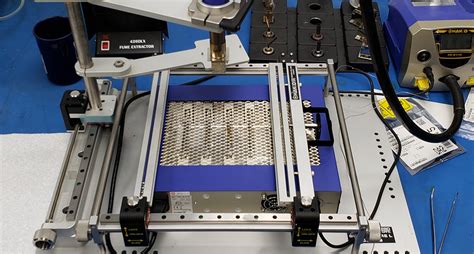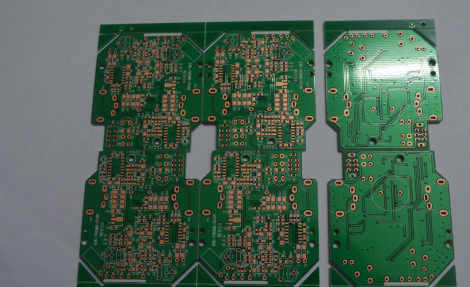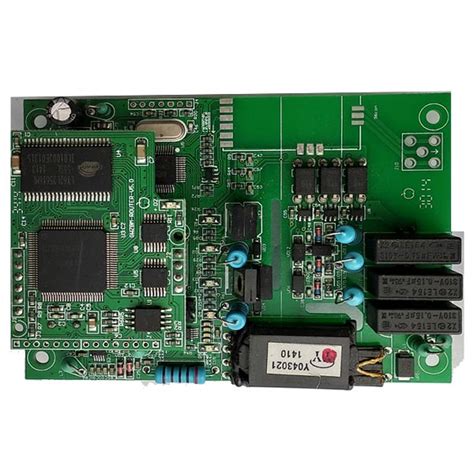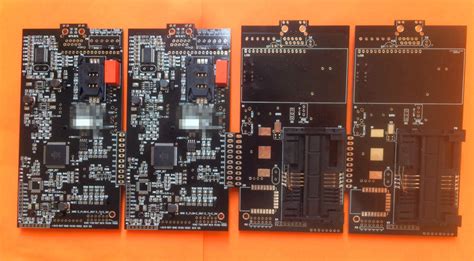Causes of Solder Joint Failures in PCBA Processing: A Comprehensive Analysis
Solder joints are critical to the functionality and reliability of Printed Circuit Board Assemblies (PCBAs). They provide both electrical connections and mechanical support for components mounted on the PCB. However, solder joint failures are a common issue in PCBA processing, leading to reduced performance, intermittent connections, or complete device failure. Understanding the root causes of solder joint failures is essential for improving manufacturing processes, ensuring product reliability, and reducing costs. This article provides a comprehensive analysis of the primary causes of solder joint failures in PCBA processing, including material, process, design, and environmental factors.
1. Introduction to Solder Joint Failures
Solder joint failures occur when the connection between a component and the PCB is compromised, leading to electrical or mechanical failure. These failures can manifest as cracks, voids, or complete detachment of the solder joint. Solder joint failures are particularly problematic in high-reliability applications, such as aerospace, automotive, and medical devices, where even a single failure can have severe consequences.

2. Primary Causes of Solder Joint Failures
2.1 Material-Related Causes
2.1.1 Solder Alloy Composition
- Incorrect Alloy Selection: Using solder alloys with inappropriate melting points or mechanical properties can lead to weak or brittle joints. For example, lead-free solder alloys (e.g., SAC305) are more prone to brittle fractures under mechanical stress compared to traditional tin-lead solder.
- Impurities in Solder: Contaminants in the solder alloy, such as oxidation or foreign particles, can weaken the joint and increase the risk of failure.
2.1.2 Flux Residue
- Inadequate Flux Activation: Insufficient flux activation can result in poor wetting and weak solder joints.
- Corrosive Flux Residue: If flux residue is not properly cleaned, it can corrode the solder joint over time, leading to failure.
2.1.3 PCB and Component Materials
- Poor Surface Finish: Inadequate or oxidized surface finishes on PCB pads or component leads can prevent proper solder wetting, leading to weak joints.
- Thermal Expansion Mismatch: Differences in the coefficient of thermal expansion (CTE) between the PCB, components, and solder alloy can cause stress and cracking during thermal cycling.
2.2 Process-Related Causes
2.2.1 Soldering Temperature
- Insufficient Temperature: If the soldering temperature is too low, the solder may not fully melt, resulting in incomplete wetting and weak joints.
- Excessive Temperature: Overheating can damage components, oxidize the solder, or cause thermal stress, leading to joint failure.
2.2.2 Soldering Time
- Insufficient Time: If the solder is not held at the correct temperature for long enough, it may not fully wet the surfaces, resulting in weak joints.
- Excessive Time: Prolonged exposure to high temperatures can cause intermetallic compound (IMC) growth, which weakens the joint over time.
2.2.3 Solder Paste Application
- Incorrect Solder Paste Volume: Too little solder paste can result in insufficient solder joint formation, while too much can cause bridging or tombstoning.
- Poor Solder Paste Deposition: Misaligned or inconsistent solder paste deposition can lead to uneven solder joints or incomplete connections.
2.2.4 Reflow Profile
- Incorrect Reflow Profile: An improperly designed reflow profile (e.g., incorrect ramp-up, peak temperature, or cooling rate) can cause defects such as voids, cold joints, or excessive IMC growth.
2.2.5 Cleaning Process
- Inadequate Cleaning: Failure to remove flux residue or contaminants can lead to corrosion or electrical shorts.
- Over-Cleaning: Aggressive cleaning processes can damage the solder joint or PCB surface.
2.3 Design-Related Causes
2.3.1 Pad Design
- Incorrect Pad Size or Shape: Pads that are too small or improperly shaped can result in insufficient solder joint formation or weak mechanical connections.
- Poor Thermal Relief: Inadequate thermal relief design can cause uneven heating during soldering, leading to incomplete joints or thermal stress.
2.3.2 Component Placement
- Insufficient Spacing: Placing components too close together can make it difficult to achieve proper solder joints and increase the risk of bridging.
- Orientation Issues: Improper component orientation can lead to uneven solder distribution or tombstoning.
2.3.3 Via Design
- Via-in-Pad Issues: Vias placed directly under pads can cause solder wicking, resulting in insufficient solder joint formation.
- Thermal Vias: Poorly designed thermal vias can lead to uneven heat distribution during soldering.
2.3.4 Thermal Management
- Inadequate Heat Dissipation: Poor thermal management can cause localized overheating, leading to solder joint failure.
- CTE Mismatch: Mismatched CTE between the PCB, components, and solder alloy can cause stress and cracking during thermal cycling.
2.4 Environmental and Operational Causes
2.4.1 Thermal Cycling
- Repeated Temperature Changes: Thermal cycling can cause mechanical stress in solder joints, leading to fatigue and cracking over time.
- Extreme Temperatures: Exposure to extremely high or low temperatures can weaken solder joints or cause them to fail.
2.4.2 Mechanical Stress
- Vibration and Shock: Mechanical stress from vibration or shock can cause solder joints to crack or detach.
- Flexing of PCB: Flexing or bending of the PCB can stress solder joints, particularly in flexible or rigid-flex designs.
2.4.3 Humidity and Corrosion
- Moisture Ingress: Exposure to high humidity or moisture can lead to corrosion of the solder joint or PCB surface.
- Contaminants: Environmental contaminants, such as dust or chemicals, can corrode solder joints or cause electrical shorts.
2.4.4 Aging and Intermetallic Growth
- Intermetallic Compound (IMC) Formation: Over time, IMC layers can grow at the solder joint interface, making the joint more brittle and prone to failure.
- Material Degradation: Aging of solder alloys or PCB materials can weaken the joint over time.

3. Best Practices for Preventing Solder Joint Failures
3.1 Material Selection
- Choose Appropriate Solder Alloys: Select solder alloys with suitable mechanical and thermal properties for the application.
- Use High-Quality Flux: Ensure that the flux is compatible with the solder alloy and provides adequate activation and cleaning.
3.2 Process Optimization
- Control Soldering Temperature and Time: Use precise temperature and time controls to ensure proper solder joint formation.
- Optimize Reflow Profile: Design the reflow profile to minimize defects such as voids, cold joints, or excessive IMC growth.
- Ensure Proper Solder Paste Application: Use accurate solder paste deposition techniques to achieve consistent and reliable joints.
3.3 Design Improvements
- Optimize Pad and Via Design: Ensure that pads and vias are properly sized and shaped to support strong solder joints.
- Improve Thermal Management: Design for effective heat dissipation and minimize CTE mismatch between materials.
- Follow Design for Manufacturability (DFM) Principles: Collaborate with manufacturers to ensure that the design is optimized for the assembly process.
3.4 Environmental Protection
- Use Conformal Coatings: Apply conformal coatings to protect solder joints from moisture, dust, and contaminants.
- Implement Robust Enclosures: Use enclosures to shield the PCB from mechanical stress and environmental factors.
3.5 Testing and Inspection
- Conduct Automated Optical Inspection (AOI): Use AOI to detect defects such as insufficient solder, bridging, or misalignment.
- Perform X-Ray Inspection: Use X-ray inspection to identify hidden defects, such as voids or cracks in solder joints.
- Conduct Thermal Cycling Tests: Test the PCB under thermal cycling conditions to identify potential solder joint failures.
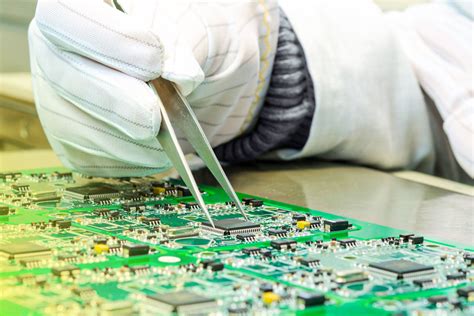
4. Emerging Trends in Solder Joint Reliability
4.1 Advanced Solder Alloys
- Nanocomposite Solders: Incorporating nanoparticles into solder alloys to improve mechanical and thermal properties.
- Low-Temperature Solders: Developing solder alloys with lower melting points to reduce thermal stress during assembly.
4.2 Additive Manufacturing
- 3D Printing of Solder Joints: Using additive manufacturing techniques to create customized solder joint geometries for improved reliability.
4.3 Smart Manufacturing
- Real-Time Process Monitoring: Using IoT and data analytics to monitor and optimize soldering processes in real time.
- Predictive Maintenance: Implementing predictive maintenance strategies to identify and address potential solder joint failures before they occur.
5. Conclusion
Solder joint failures in PCBA processing can result from a wide range of factors, including material selection, process control, design considerations, and environmental conditions. By understanding these causes and implementing best practices for prevention, manufacturers can improve the reliability and performance of their PCBAs. Emerging trends, such as advanced solder alloys, additive manufacturing, and smart manufacturing, offer new opportunities for enhancing solder joint reliability and reducing the risk of failures. With careful attention to detail and adherence to industry standards, solder joint failures can be minimized, ensuring the long-term success of electronic products.

